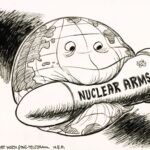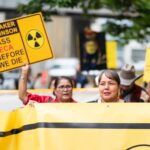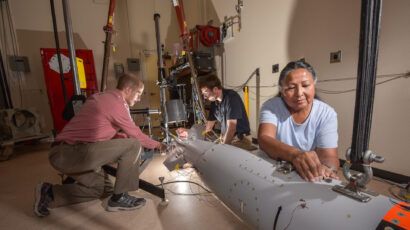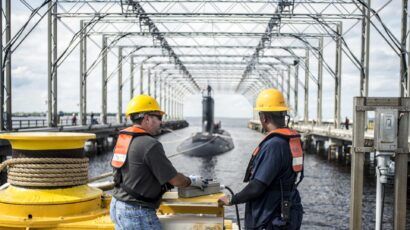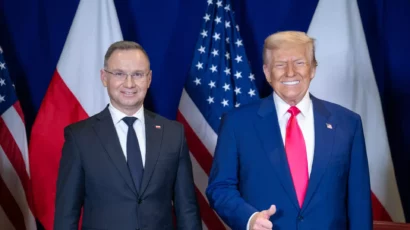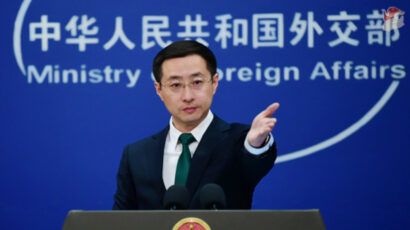Germany’s slowing nuclear phaseout
By Len Ackland | January 22, 2010
Eight years ago, a German coalition government comprised of Social Democrats and Greens passed legislation phasing out the country’s nuclear power plants, which provide one-quarter of German electricity, after roughly 32 years of operation. Given that schedule, at least two of the country’s 17 nuclear reactors should be shutting down this year.
But, after a September parliamentary election where a conservative block led by Chancellor Angela Merkel came to power, these plans appear to be on hold. During the campaign, the chancellor’s Christian Democratic Union, along with its sister party the Christian Social Union and the libertarian Free Democratic Party, declared that the country’s reactors should run beyond the phaseout deadline of 2022. In contrast, their main opponents, the Social Democrats and the Greens, wanted to stick to the reactor shutdown schedule they had passed in 2002.
The new ruling coalition reacted sharply in December when the Social Democrats demanded that the 33-year-old Neckarwestheim 1 reactor near Stuttgart be closed. “The question of extending reactor operating lifetimes requires an overall [energy] concept,” said leading coalition parliamentarians Joachim Pfeiffer and Christian Lindner in a joint statement [in German]. “It makes no sense to prematurely take individual reactors off the grid.” They added that a reactor’s safety, not its age, should determine whether or not it should be shut down.
The parliamentarians’ safety focus reflects the new conservative coalition’s position expressed in its 132-page working agreement. “We are prepared to extend the operating life of Germany’s nuclear power plants on condition that strict German and international safety standards are met,” the agreement reads. Yet who enforces the standards is crucial, which is why the prominent German environmental group German Environment Aid [in German] recently challenged the appointment of former utility executive Gerald Hennenhöfer as head of the Environment Ministry’s Reactor Safety Division.
These developments are just part of the ambiguous nuclear picture emerging in Germany after the elections. And what’s happening there is just part of an apparent European reassessment of nuclear power. For example, the Spanish government is considering legislation to extend the operating lifetimes of its eight reactors, which provide about 20 percent of the country’s electricity. France, which gets 78 percent of its electricity from nuclear plants, has announced plans to invest $1.4 billion for research into next-generation reactors that would incorporate revolutionary designs compared to currently deployed reactors. Britain advanced its own nuclear revival in November by identifying 10 new reactor sites; German companies E.ON and RWE have formed a joint venture to build four of them.
Before the election, some German nuclear advocates indicated that extending reactor lifetimes could be a step toward new reactors in their country. “First comes the lengthening of reactor operating lifetimes, then we’ll see,” said RWE’s CEO Jürgen Grossman in the Munich-based newspaper Süddeutsche Zeitung. Pressed to explain what he meant, Grossman said that Germany needs an energy plan in which “nuclear power must have its place.” Similarly, Walther Hohlefelder, president of the German Atomic Forum lobbying group, said the country should “not give up the option of new nuclear plants in the long run.” But the October coalition agreement dampened the advocates’ hopes. “The ban on new construction remains in force,” according to the agreement. “Nuclear energy is a bridging technology until the time when it can be reliably replaced by renewable energy.”
Germany’s new environment minister, Norbert Röttgen, a Christian Democrat and a Merkel confidant, underlined the point. “One can use atomic energy in the long run only when the majority of the people accept it,” he said, according to the English-language newspaper The Local. “This hasn’t been the case for years and in my estimation it’s not going to change.” Two pre-election opinion polls showed that more than 60 percent of the public favored the phaseout.
During the campaign, some conservative politicians coupled support for lengthened reactor lifetimes with the demand that utilities contribute as much as one-half of the windfall profits that longer-running reactors would generate into a fund aimed at further developing renewable energy, which now provides 15 percent of German electricity. (An eight-year extension for all 17 reactors could lead to as much as $66 billion in profits depending on factors including the price of electricity, according to the Ecological Institute [in German].) Volker Kauder, the chairman of the Christian Democrats, reiterated that demand after the election by calling for the industry to finance a roughly $60 billion-$70 billion renewable energy fund. Dieter Rucht, an analyst at the Social Science Research Center Berlin, suggested that citizens liked the idea of nuclear power operations funding more renewable energy. He told Süddeutsche Zeitung that the majority of German voters saw “no qualitative difference” between sticking to the 2022 phaseout goal and extending nuclear operations for a few more years if such an extension meant more money for renewable energy. Regardless, nuclear power wasn’t much of an election issue. Voters were more focused on tax reform and the ongoing recession, according to Der Spiegel magazine, which called the campaign “one of the dullest in living memory.”
The new government said in its coalition agreement that details of the reactor lifetime extension will be worked out with the utilities only after the government creates its national energy strategy, which is expected later this year. The policy could go various ways depending on the answers to key questions, including the following:
- Will the operating lifetimes of all German reactors be extended or just those deemed “safe”?
- How long will the lifetime extension be–a few years more than the current limit or longer? German nuclear advocates point to the United States, where more than one-half of the country’s 104 reactors have had their operating licenses extended to 60 years from the original 40, with retrofitting overseen by the Nuclear Regulatory Commission. Nuclear skeptics worry that extensive upgrades would essentially amount to new construction and allow existing reactors to operate for decades to come.
- Will proposals to fund renewable energy development with nuclear profits become law? After construction costs are paid off, nuclear reactors are relatively cheap to operate. Such profits would be reduced, of course, if the utilities undertake major reactor retrofitting. Whether companies are allowed to invest in their own projects or must contribute to a fund administered externally would lead to a host of additional questions about administration and project selection.
The future of German nuclear power is being decided now. After years of public distaste for this technology, the need for non-carbon emitting energy sources and worries over how quickly renewable energy sources can replace nuclear have made it, at least temporarily, more attractive. Although German conservatives argue that nuclear power is a “bridge” technology to viable renewables, how far that bridge may extend has not yet been determined.
Editor’s note: This is an update to a longer piece, “Can Germany survive without nuclear power?” that appeared in the July/August 2009 Bulletin of the Atomic Scientists.
Together, we make the world safer.
The Bulletin elevates expert voices above the noise. But as an independent nonprofit organization, our operations depend on the support of readers like you. Help us continue to deliver quality journalism that holds leaders accountable. Your support of our work at any level is important. In return, we promise our coverage will be understandable, influential, vigilant, solution-oriented, and fair-minded. Together we can make a difference.
Topics: Nuclear Energy, Opinion


